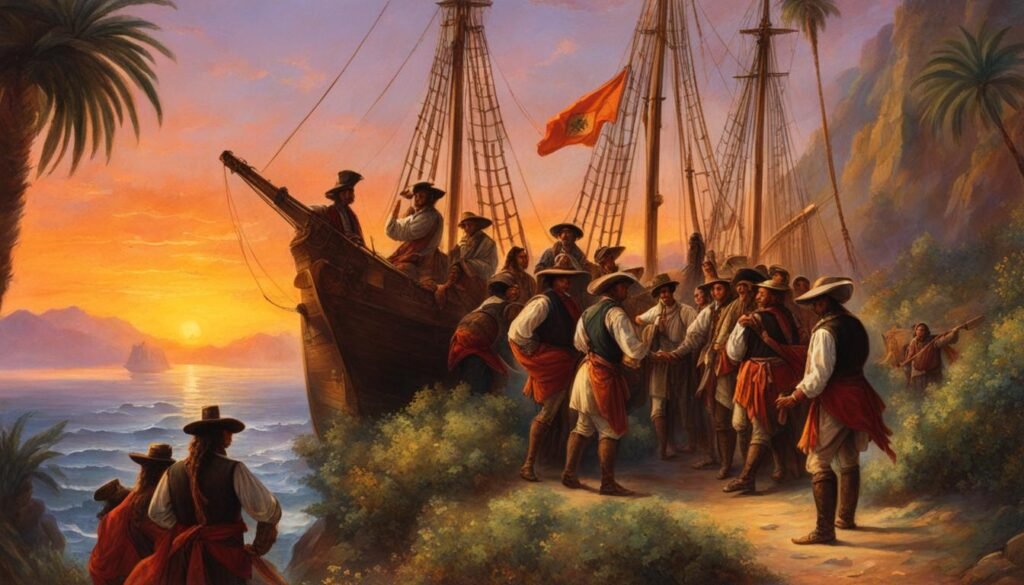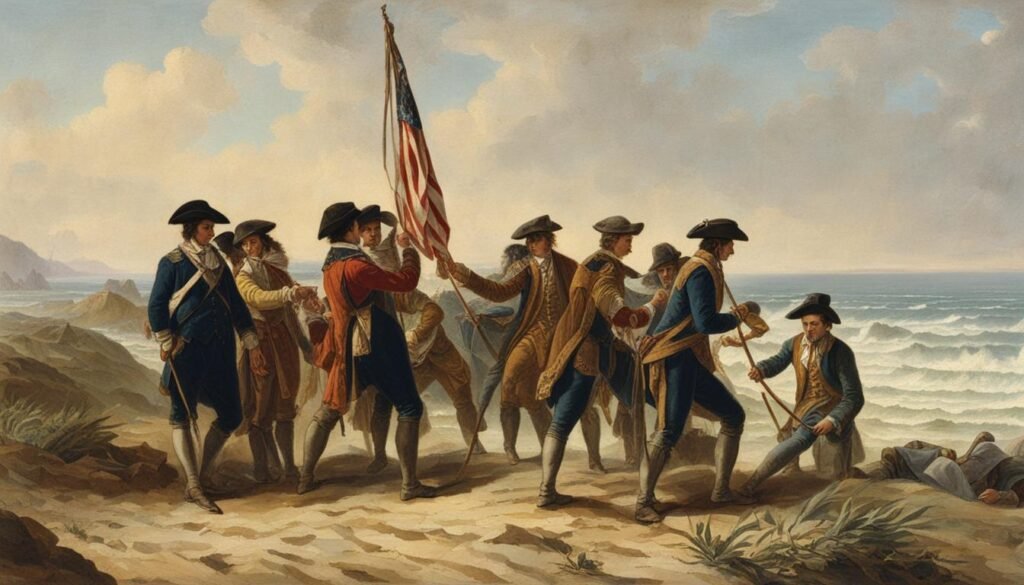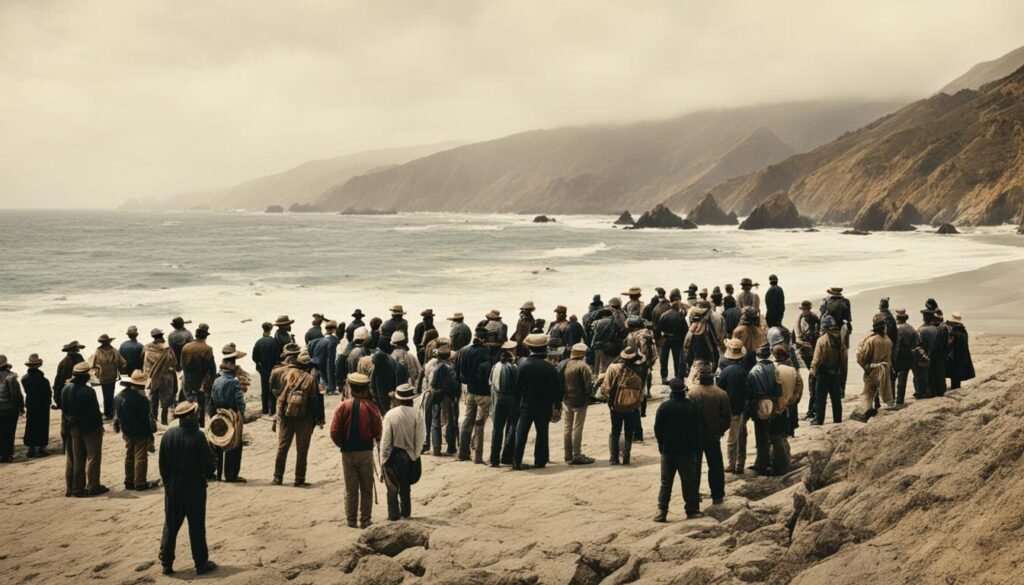Hey there! Are you curious to know when California was founded? Well, you’ve come to the right place. In this article, I’ll take you on a journey through the fascinating history of California, from its early exploration to its eventual founding as a state. Let’s dive in!
California, a state located on the west coast of the United States, was founded in 1850. However, its history dates back much further than that. Before its founding, California was under Spanish and Mexican rule.
The exploration of California by the Spanish began in the 16th century. Spanish explorers, such as Juan Rodriguez Cabrillo and Sebastian Vizcaino, sailed along the California coastline and claimed the land for Spain. This period of Spanish exploration played a pivotal role in the discovery of California.
In the 18th century, European settlement started to take place in California. The Spanish established missions, presidios, and pueblos, which laid the groundwork for the colonization of the region. The construction of missions also introduced Christianity to the native population.
One of the most significant events in California’s history is the California Gold Rush, which began in 1848. The discovery of gold at Sutter’s Mill attracted a massive influx of people from around the world, known as “forty-niners.” This gold rush transformed California’s population and economy, leading to rapid settlement and development.
Finally, on September 9, 1850, California officially became the 31st state of the United States. Its foundation marked the culmination of its rich history of exploration, colonization, and settlement.
Key Takeaways:
- California was founded in 1850 and became the 31st state of the United States.
- Before its founding, California was under Spanish and Mexican rule.
- Spanish exploration along the California coastline began in the 16th century.
- The California Gold Rush in 1848 brought a massive influx of people to the region.
- The establishment of missions played a significant role in shaping California’s early history.
Now that you know when California was founded and discovered, you have a deeper understanding of this fascinating state’s history. Stay tuned for more captivating history gems!
The Spanish Colonial Period in California
The Spanish colonial period in California, which spanned from the 16th century until 1821, marked a significant chapter in the state’s history. During this time, explorers from Spain embarked on expeditions along the California coastline, leading to the exploration and eventual colonization of the region. Notable figures such as Juan Rodriguez Cabrillo and Sebastian Vizcaino played crucial roles in charting the California coast and staking territorial claims for Spain.
Spanish colonization of California was achieved through the establishment of missions, presidios, and pueblos. The Spanish government, with the support of the Catholic Church, aimed to convert the native population to Christianity and incorporate them into Spanish society. The construction of missions, such as Mission San Diego de Alcalá and Mission San Carlos Borromeo de Carmelo, served as hubs for religious instruction, agricultural development, and the spreading of Spanish culture and influence.
The Spanish colonial period in California left a lasting impact on the state’s identity and development. It laid the foundation for the establishment of a diverse and multicultural society, with the blending of Spanish, Native American, and later, Mexican influences. The missions, in particular, shaped the landscape and culture of California, with their distinctive adobe architecture and agricultural practices.

The Exploration of California
The exploration and mapping of California’s coastline by Spanish explorers were significant contributions to the understanding of the region’s geography. They sailed along the coast, encountering various native tribes, and documenting their observations along the way. These explorations provided valuable information about the land, resources, and potential for colonization.
The Spanish Missions in California
The establishment of Spanish missions was a central aspect of the colonial strategy in California. These missions acted as religious and agricultural centers, serving both as places of worship and as economic hubs for the surrounding communities. The Spanish Franciscan missionaries played a pivotal role in the conversion of Native Americans to Christianity and the integration of indigenous populations into Spanish society.
The Legacy of Spanish Colonization in California
The Spanish colonial period in California laid the groundwork for subsequent periods of history, including Mexican rule and American settlement. The cultural, architectural, and agricultural contributions of the Spanish have endured, shaping the unique identity of California today. The influence of Spanish colonization can still be seen in the state’s art, cuisine, place names, and traditions.
The California Gold Rush
The California Gold Rush, one of the most significant events in the historical timeline of California, began in 1848. It all started with the discovery of gold at Sutter’s Mill. This monumental event triggered a frenzy as news spread like wildfire, attracting people from all corners of the world, famously known as “forty-niners,” who flocked to California in search of fortune.
The gold rush had a profound impact on California’s population and economy. The influx of fortune seekers led to a rapid settlement and development of towns and cities throughout the state. What was once a small population quickly grew into a thriving community of individuals from diverse backgrounds, each hoping to strike it rich.
As more people arrived, the demand for goods and services skyrocketed, boosting local businesses and fueling economic growth. The gold rush also had a significant effect on the cultural and political landscape of California. It shaped the state’s identity and played a vital role in its historical development.
The gold rush marked a turning point in California’s history. The surge of immigrants, the rapid settlements, and the economic boom that followed forever altered the trajectory of the state. It transformed California from a sparsely populated region to a land of opportunity, attracting pioneers and shaping its future as a state.
California Becomes a State
On September 9, 1850, California officially became a state, marking a significant milestone in its history. Admitted to the Union as the 31st state, California’s statehood was the culmination of years of exploration, colonization, and settlement. Just two years prior, the discovery of gold had sparked a massive influx of people, fueling the rapid growth and development of the region.
With its founding as a state, California solidified its place as an important and influential part of the United States. The diverse history and cultural heritage of California, combined with its abundance of natural resources, have played a significant role in shaping the state’s identity.

Conclusion
The history of California is a captivating journey that encompasses exploration, colonization, and remarkable growth. From the brave Spanish explorers who first set foot on its shores to the bustling days of the California Gold Rush and the eventual founding of the state, California has left an indelible mark on the history of the United States.
California’s unique blend of abundant natural resources, diverse population, and rich cultural heritage have made it a vibrant and influential part of the country’s story. Its timeline is a testament to the determination and resilience of the people who settled in this beautiful land.
By unravelling the origins of California and delving into its fascinating history, we gain valuable insights into the state’s complex tapestry. Exploring its timeline, from the early pioneer settlers to the moment of its inception, we discover a dynamic and evolving state that continues to shape the United States in countless ways today.
FAQ
When was California founded?
California was founded in 1850 when it joined the Union as a free state.
Who discovered California?
California was discovered by Spanish explorers, such as Juan Rodriguez Cabrillo and Sebastian Vizcaino, in the 16th century.
Who found California?
California was found by Spanish explorers who claimed the land for Spain.
When was California discovered?
California was discovered in the 16th century by Spanish explorers.
What is the settlement history of California?
California was settled by Europeans in the 18th century, following Spanish exploration along the coastline.
What is the state history of California?
California has a rich history of exploration, colonization, and growth, including the Spanish colonial period and the California Gold Rush.
What is the historical timeline of California?
The historical timeline of California includes Spanish exploration in the 16th century, European settlement in the 18th century, and the California Gold Rush in the mid-19th century.
Who discovered California first?
Spanish explorers, such as Juan Rodriguez Cabrillo and Sebastian Vizcaino, were the first to discover California.
What is the California pioneer settlers’ history?
California has a history of pioneer settlers who played a crucial role in the state’s exploration, colonization, and development.
What are the origins of California?
California’s origins can be traced back to Spanish exploration and colonization in the 16th century.
When did California become a state?
California officially became a state on September 9, 1850.
What was the Spanish colonial period in California?
The Spanish colonial period in California lasted from the 16th century until 1821 when Mexico gained its independence from Spain. It involved Spanish exploration, colonization, and the establishment of missions, presidios, and pueblos.
What was the exploration of California?
The exploration of California began in the 16th century with Spanish explorers claiming the land for Spain and continued with European settlement and the California Gold Rush in the 18th and 19th centuries.
What is the history of California’s establishment?
California’s establishment can be traced back to the Spanish colonial period, European settlement, and the California Gold Rush, leading to its eventual founding as a state in 1850.
When was California’s founding date?
California’s founding date is September 9, 1850, when it officially became a state.
What was the Spanish colonization of California?
The Spanish colonization of California involved the establishment of missions, presidios, and pueblos, as well as the introduction of Christianity to the native population.
What is California’s history timeline?
California’s history timeline includes Spanish exploration in the 16th century, European settlement in the 18th century, the California Gold Rush in the mid-19th century, and its eventual statehood in 1850.
What is California’s settlement history?
California’s settlement history includes Spanish exploration, European settlement, and the California Gold Rush, which led to the rapid expansion and development of towns and cities throughout the state.
What is California’s founding year?
California’s founding year is 1850 when it officially became a state.
What is the history of California’s establishment?
The history of California’s establishment includes Spanish exploration and colonization, European settlement, and the California Gold Rush, ultimately leading to its founding as a state in 1850.
What is California’s foundation history?
California’s foundation history is rooted in Spanish exploration, colonization, and the subsequent waves of settlement and development, culminating in its establishment as a state in 1850.
What is California’s founding anniversary?
California’s founding anniversary is celebrated on September 9, 1850, the day it officially became a state.







